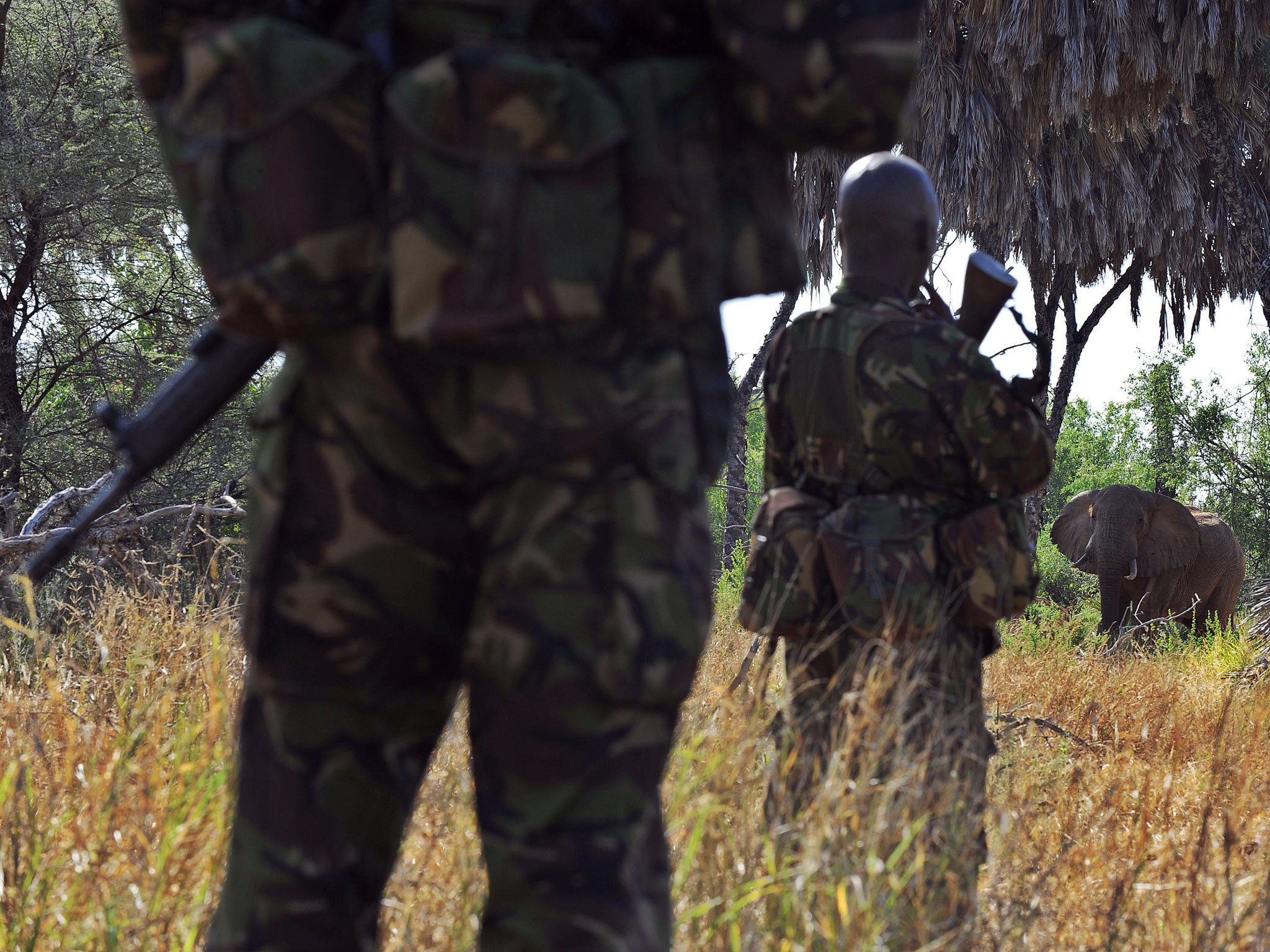Charity Appeal: The weapons that bring death to the savannah
Elephant poachers are using firearms left over from Mozambique’s civil war to slaughter elephants in neighbouring Tanzania

Your support helps us to tell the story
From reproductive rights to climate change to Big Tech, The Independent is on the ground when the story is developing. Whether it's investigating the financials of Elon Musk's pro-Trump PAC or producing our latest documentary, 'The A Word', which shines a light on the American women fighting for reproductive rights, we know how important it is to parse out the facts from the messaging.
At such a critical moment in US history, we need reporters on the ground. Your donation allows us to keep sending journalists to speak to both sides of the story.
The Independent is trusted by Americans across the entire political spectrum. And unlike many other quality news outlets, we choose not to lock Americans out of our reporting and analysis with paywalls. We believe quality journalism should be available to everyone, paid for by those who can afford it.
Your support makes all the difference.The wildest sound on the savannah is not the lion’s roar, but the elephant’s trumpet. When he senses a lurking poacher, the elephant screams, loud and shrill, to alert the herd and scare his enemy.
The poacher, standing only a few feet away takes aim and fires. The elephant screams again, before he collapses in a heap. One bullet will rarely kill an adult elephant, and it takes many minutes before the life drains away.
Military weapons such as AK-47s are increasingly used by poachers. Bullets from these guns weigh too little to penetrate the elephant’s thick skull so an instant death is rare. In the meantime, poachers carve out the elephant’s tusks – never sparing the valuable inches of ivory lodged firmly inside his head. A local poacher will sell a kilogram of ivory for as little as 80,000 Tanzanian shillings or £30.
Max Jenes is patrol manager for the Pams Foundation, a conservation organisation based in Tanzania. He and his team of 200 scouts who guard Tanzania’s southern border with Mozambique have witnessed the growth in weapons coming into the country over the past five years. “Since 2011, we have started to concentrate our efforts on the boundary because most of the firearms being used against wildlife are coming in from Mozambique.
“Almost every patrol we do along the Rovuma river we arrest people with firearms. We usually get nine or 10 firearms in a single patrol.”
The foundation’s most recent report from August 2013 documents the seizure of 473 firearms and 1,138 rounds of ammunition in the previous 12 months. It also found 255 elephant carcasses, 17 other wildlife carcasses and confiscated 118 ivory tusks. The foundation works alongside local communities and the government to prevent poaching and reduce human-elephant conflict in the Selous-Niassa corridor, an area around half the size of the UK.
The ivory, worth thousands of pounds can be carried in on foot, small boats or motorcycles and even on buses. There are also cases of trucks carrying ivory disguised as government vehicles that go unchecked at borders, where the guards are often complicit in the smuggling operations. Last month, an immigration official from Mozambique was caught with 16 tusks.
Ivory is smuggled both ways but mostly from Mozambique into Tanzania. From the southern border, it is transported to the capital, Dar es Salaam, before being taken abroad.
Jenes said: “The big elephant poachers are from Mozambique. These guys are not professional, they are locals. But they are very experienced. In 2012, we got information about a guy from Mozambique who had collected 600 tusks. But we did not catch him.
“Two of our men have died in the line of duty in the past 18 months.”
He described the death of one of his colleagues: “He was killed by a bow and arrow. They took his gun from him and chopped his body to pieces.”
In another incident, two scouts were attacked in a nearby village: “Poachers came in the middle of the night and burnt their huts. Their families were sleeping inside but managed to escape.
“The poachers are people from our communities. They are working for people in the big cities. The big guys are in Dar es Salaam. It’s a network; it’s a syndicate: they get food and support in return. And they don’t just take the ivory – they buy it.”
Wayne Lotter, the vice president of the International Rangers Foundation, who has worked in the region for five years, estimated that he had seen at least 200 elephant carcasses in the past 12 months. “The people on the ground, from local communities and villages are poaching because they are desperate for money – they are a symptom of the problem. There is very little risk as you go up the chain.”
It is likely that the weapons used are left over from Mozambique’s 16-year civil war, which ended in 1992. Poachers carrying weapons from Mozambique have been caught in the Serengeti National Park in Tanzania and Tsavo National Park in Kenya.
Weapons also enter Tanzania from the Democratic Republic of Congo and Somalia. The rise of militarised poaching in East Africa in the past 10 years is well documented and there is evidence that poaching syndicates are linked to terrorist groups such as Janjaweed, al-Shabaab, Boko Haram and the Lord’s Resistance Army.
Poachers with weapons pose an increasing threat to elephants and people across East Africa. The Independent’s Christmas Appeal will support Space for Giants, a Kenya-based charity, which protects elephants through techniques such as GPS collaring and community co-operation to prevent similar massacres in Kenya.
Join our commenting forum
Join thought-provoking conversations, follow other Independent readers and see their replies
Comments